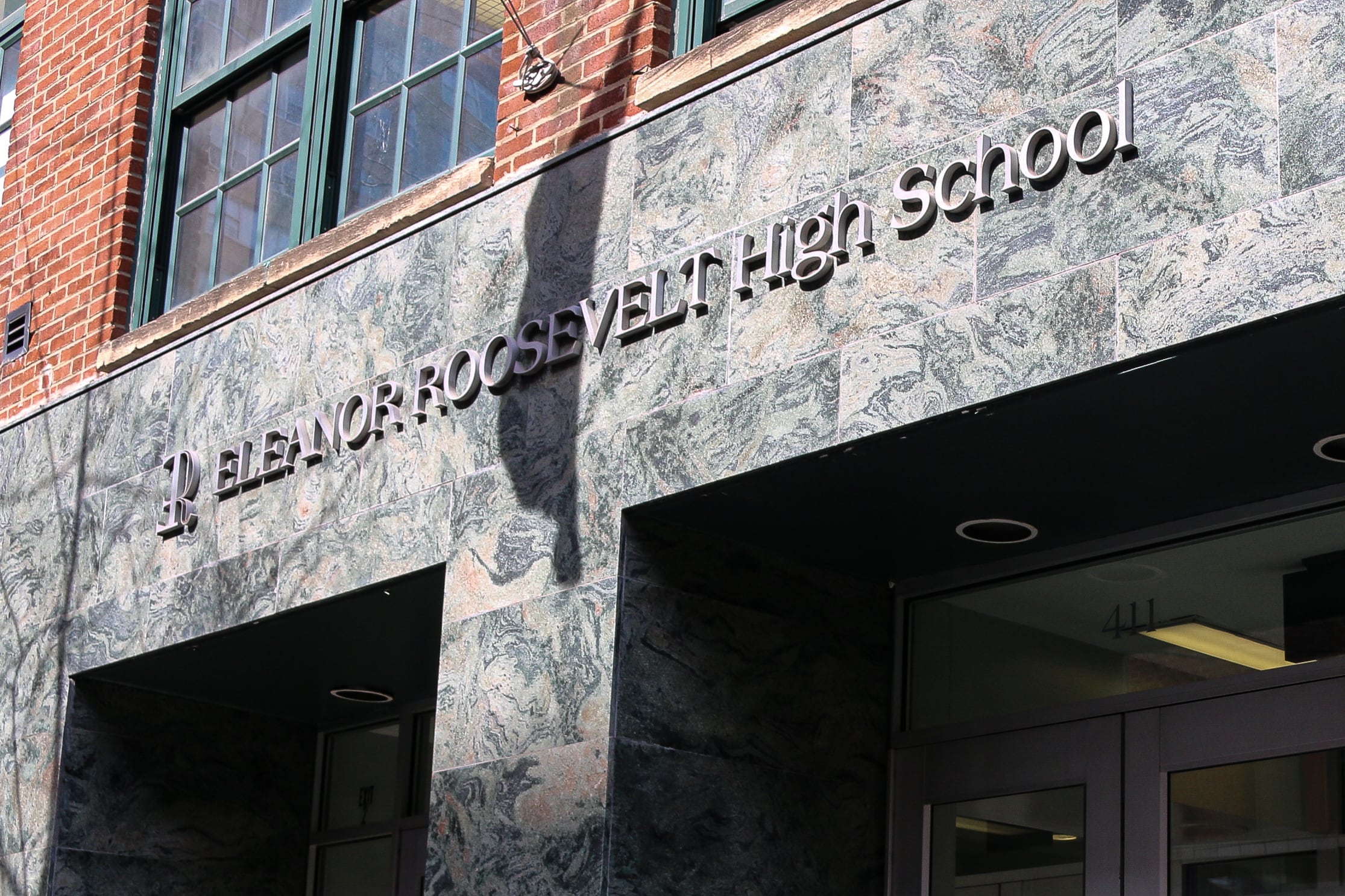Admissions to New York City’s high schools veered from the usual script this year: The education department eliminated geographic preferences that allowed one Manhattan district — which includes some of the city’s wealthiest ZIP codes — to maintain its own set of elite high schools.
The local stronghold on those six coveted and highly selective schools in District 2, spanning areas such as TriBeCa, Greenwich Village and the Upper East Side, appears to have been broken for next year’s incoming freshman class.
At the Upper East Side’s Eleanor Roosevelt High School, roughly 62% of the offers were made to students outside of the district, according to education department data released Friday. The year before, only 1% of teens outside the district received offers to the high performing high school. At Baruch College Campus High School in Gramercy, 42% of seats went to students outside of the district, up 2% from the previous year.
With offers being made to students who live farther afield, the number of students from low-income families also increased. It tripled to 50% at Eleanor Roosevelt, and rose from 36% to 66% at Baruch. Across the district, offers to students eligible for free or reduced lunch rose from 47% last year to 60%, according to the education department. (Citywide, roughly 72% of students are from low-income families.)
“This is a pretty remarkable change, but not altogether unexpected,” said Sean Corcoran, a Vanderbilt University professor who has researched New York City admissions. “The District 2 high schools are some of the most desired in the city, and the number of potential applicants beyond District 2 far exceeds the number of applicants within District 2.”
When it comes to race and class, New York City is home to one of the most segregated school systems in the country, a status driven partly by its admissions practices. The city is home to a higher share of “screened” schools that base admissions off of academic records than anywhere else in the nation. The competitive and complicated process of applying to these selective high schools favors families with the resources and savvy to navigate the system, which often means they tend to enroll fewer Black, Latino, and low-income students.
District 2’s high schools are especially segregated, with almost quadruple the enrollment of white students compared to the citywide average. The district has been mired in a fight over the fate of preserving the geographic priority of these schools, with some principals calling on the city to eliminate it, while some parents have mounted efforts to fiercely guard it.
The high school application process was designed to open access to students regardless of their ZIP codes, but nearly 50 schools give priority to students based on whether they lived or attended a middle school within a particular district. The city permanently changed that this year. Other geographic priorities that give admissions preferences to students within the school’s borough, for instance, will be eliminated in the coming admissions cycle.
The sought-after high schools in District 2 and elsewhere across the city, however, did not eliminate other selective criteria. Since many of the measures these schools typically use for admissions were upended by the coronavirus pandemic — such as state test scores, grades, and attendance — the city allowed them to rely on academic records from before the health crisis struck.
Families still struggled with the application process this year, and many observers said that information about changes was confusing and hard to come by.
“Every student should have access to every school in the city,” said Elissa Stein, an admissions consultant who runs High School 411, helping parents navigate their options. “But the way the DOE made drastic changes mid-season, with no advance notice to affected families added even more stress and anxiety to an already chaotic season.”
As students awaited their high school offers, another glitch occurred, similar to what happened with middle school admission, where some placements were erroneously posted to the city’s online portal, and then quickly pulled.
That only frayed nerves even more, Stein said.
Overall, nearly 78,000 eighth graders applied to high schools, which was essentially flat from the year before. The dip in kindergarten applications was much steeper at 12%, and applications for middle school — where academic screens were eliminated for this year’s admissions cycle — dropped nearly 6%.
Roughly 73% of high school applicants received an offer to one of their top three choices, the data showed, holding steady from the previous year.






